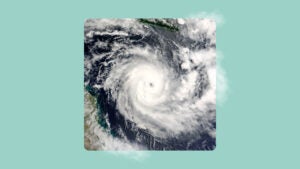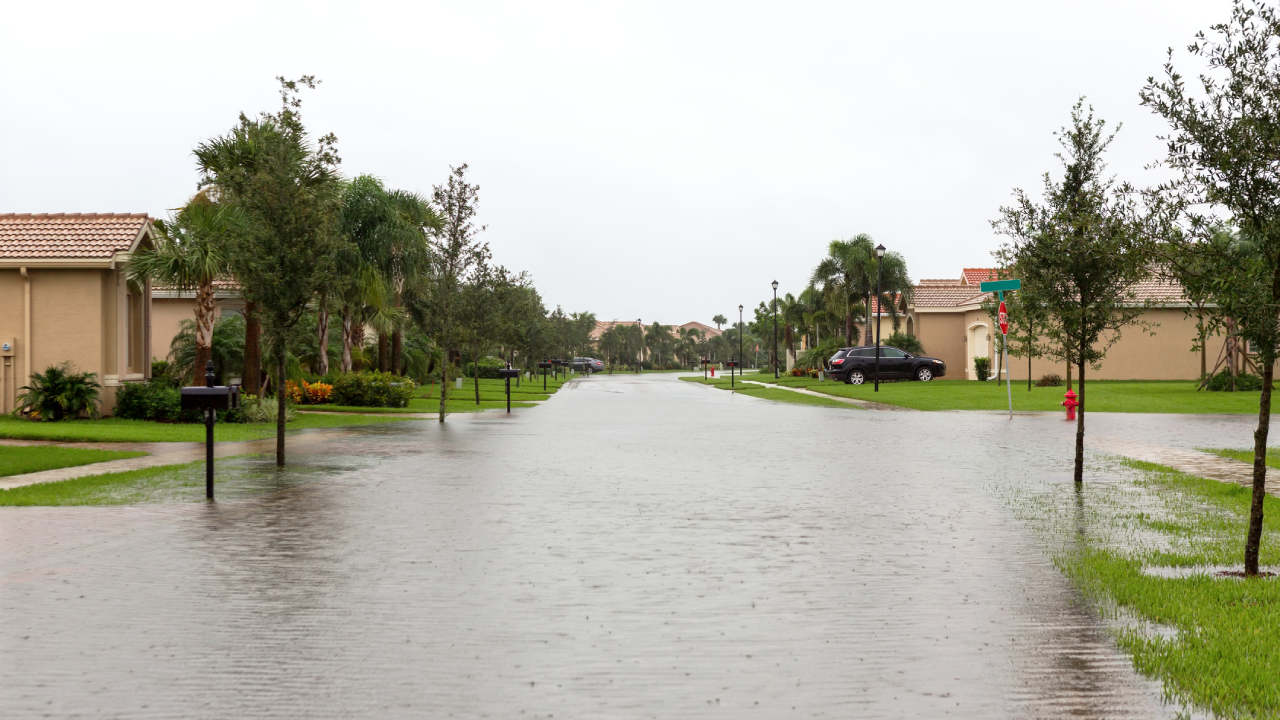Extreme weather’s financial burden on the U.S. South

More frequent extreme weather events in the Southern U.S. have caused energy costs to soar: 63 percent of Southerners have incurred costs due to extreme weather in the past decade. This summer saw record-breaking heat waves, which caused an increase in energy consumption and costly electricity bills. Other challenges like inflation and rising insurance costs added more stress to the already tenuous financial situation many Americans face. Whether you own or rent your home, becoming aware of the hidden costs of extreme weather can help you budget for your household’s expenses.
Key takeaways
- According to the National Aeronautics and Space Administration (NASA), summer 2023 was the hottest on record since 1880. 72 percent of Americans reported higher than anticipated utility costs throughout the warmer season.
- Adding weatherstripping to windows and doors can keep heat inside during the winter and outside during the summer, saving you up to 15 percent on energy bills.
- Changes in sustainable home design and green building codes on the state and federal levels aim to lower energy costs for over 35 percent of households in America.
Extreme weather data and insights
According to Bankrate’s survey on extreme weather’s impact on personal finances, 81 percent of U.S. adults have incurred costs due to extreme weather over the past 10 years or paid higher energy bills due to summer 2023’s extreme heat.
- Most Americans have been impacted by extreme weather. According to a new Bankrate survey, 57 percent of American adults have incurred costs due to the effects of extreme weather over the past 10 years, such as flooding, hurricanes, tornadoes, earthquakes, heavy snow and wildfires.
- Southerners bear the brunt of the financial burden. Nearly two-thirds of residents in Southern states have been impacted by extreme weather costs.
- Increased energy bills are a primary source of extreme weather costs. Higher energy bills were the most commonly incurred expense due to extreme weather over the past 10 years, with 34 percent of Southerners reporting this cost. Comparatively, 27 percent of Northeasterners experienced higher energy costs due to extreme weather in the same timeframe.
- The summer’s extreme heat wave caused energy bills to skyrocket. Over half of U.S. adults, 53 percent, said higher-than-expected electricity bills strained their finances this summer. 28 percent of Southerners stated that higher energy costs from this summer significantly strained their finances, and 32 percent said that it somewhat strained their finances.
- Most Americans expect the rising cost of extreme weather to continue. 57 percent of Americans expect climate, extreme weather and the environment to negatively impact their finances in the next 10 years. Regionally, 57 percent of Southern residents have this outlook, while Northeast and Midwesterners are at 55 percent, and the West is the highest, at 61 percent.
Extreme weather costs in the Southern U.S.
As of October 2023, the United States has seen a total of 24 weather or climate disaster events that exceed over $1 billion each, and the 2023 hurricane season isn’t over yet. Some financial impacts of extreme weather may be less obvious than others. According to Bankrate’s survey, here is how extreme weather has impacted Southerners’ finances over the last decade:
| Cost | Percent of Southerners impacted |
|---|---|
| Evacuation expenses | 10% |
| Car damage expenses | 14% |
| Home/property damage expenses | 25% |
| Lost income because you were unable to work | 17% |
| Medical bills | 11% |
| Spoiled food due to extreme weather | 30% |
| Higher energy costs | 34% |
According to the study conducted by Nature Communications, long-term power outages (eight hours or more) are 13.7 times more likely to occur during hurricanes and tropical storms. Power outages can cause food spoilage, work interruptions and even medical expenses for individuals who rely on power for medical device support.
Extreme heat forces household appliances like freezers, refrigerators and air conditions to use more energy than usual to maintain the correct temperature. Even with energy-efficient appliances being more commonplace, 59 percent of Southern residents said the increase in electricity bills over the past summer caused financial strain.
Electricity cost in Southern states over the past five years
| State | 2023 cents/kWh | 2022 cents/kWh | 2021 cents/kWh | 2020 cents/kWh | 2019 cents/kWh |
|---|---|---|---|---|---|
| Alabama | 14.61 | 14.39 | 12.96 | 12.57 | 12.53 |
| Arkansas | 12.16 | 11.86 | 11.27 | 10.41 | 9.80 |
| Delaware | 15.27 | 13.73 | 12.52 | 12.56 | 12.55 |
| District of Columbia | 16.01 | 14.20 | 13.09 | 12.63 | 12.98 |
| Florida | 15.27 | 13.92 | 11.90 | 11.27 | 11.70 |
| Georgia | 13.81 | 14.02 | 12.51 | 12.02 | 11.76 |
| Kentucky | 12.47 | 12.85 | 11.50 | 10.87 | 10.80 |
| Louisiana | 11.65 | 12.69 | 11.02 | 9.67 | 9.80 |
| Maryland | 16.10 | 14.51 | 13.12 | 13.01 | 13.12 |
| Mississippi | 13.58 | 12.65 | 11.56 | 11.17 | 11.27 |
| North Carolina | 12.93 | 12.08 | 11.32 | 11.38 | 11.42 |
| Oklahoma | 11.99 | 12.57 | 11.00 | 10.12 | 10.21 |
| South Carolina | 14.12 | 14.11 | 12.86 | 12.78 | 12.99 |
| Tennessee | 12.32 | 12.37 | 11.07 | 10.76 | 10.87 |
| Texas | 14.24 | 13.55 | 12.11 | 11.71 | 11.76 |
| Virginia | 14.54 | 13.52 | 11.96 | 12.03 | 12.07 |
| West Virginia | 13.98 | 13.25 | 12.15 | 11.80 | 11.25 |
| U.S. | 15.92 | 15.12 | 13.66 | 13.15 | 13.01 |
*2023 cents per kWh are preliminary
*Southern states as deemed by the U.S. Federal Government
*Statistics from the U.S. Energy Information Administration
Evacuation expenses can add up; 10 percent of Southerners have lost money at some point over the past 10 years due to evacuations. When disasters strike, the availability of rental vehicles and hotels decreases due to the number of displaced people paired with the need for housing for the influx of emergency responders, volunteers, claims adjusters, contractors, builders and others.
Sudden expenses impact everyone differently. Southern residents ages 35-54 reported the highest financial implications, with 68 percent seeing increased electricity bills during summer 2023. Income level influences how increased energy bills impact budgets. Among Southern residents with a gross household income under $50,000, 66 percent experienced financial strain as a result of higher energy bills this summer. For those with a gross household income over $100,000, this figure drops to 43 percent.
Future financial impact
According to Bankrate’s financial security survey, 57 percent of Americans report feeling uncomfortable with their level of emergency savings money. Extreme weather, exacerbated by climate change, is costing Americans money in emergency expenses, like evacuation costs, and in day-to-day expenses, like home insurance premiums and energy costs. Understanding where your budget might be impacted by these costs can help you plan for them.
For example, droughts and extreme heat cause high energy and water bills. Making small changes, like installing drought-resistant landscaping and properly insulating your home, can conserve water and lower your bill. Parking your car in a garage or a pop-up tent may save you thousands on the cost of peeled paint and cracked dashboards that the Southern heat is known to cause.
We asked Levi Kastner, owner agent of Kastner Insurance Group in Lafayette, Louisiana, for tips on how to plan for some of these higher expenses due to extreme weather:
Just try to be prepared. That means having your important documents in a safe place, making sure you adequately maintain your home or business and plan for the worst. I think as long as you plan and predict, you won't be totally caught off guard if something does happen. Being a veteran, that old saying remains true. Prior planning prevents poor performance.— Levi Kastner, Owner Agent of Kastner Insurance Group
Government initiative
The National Climate Task Force recently launched a new program called National Initiative to Advance Building Codes. It aims to help state and local governments upgrade to more energy-efficient and extreme weather-resistant building standards. Aside from attempting to have all federal buildings achieve net-zero emissions by 2045, the White House predicts that with funding provided to the Department of Energy (DOE) and the Federal Emergency Management Agency (FEMA), along with support from the Department of Housing and Urban Development (HUD), Americans could save $162 per year with modernized energy codes.
Money tip: Inflation is another top concern for most Americans, with 68 percent of those who say money has a negative impact on their mental health citing inflation as a source of financial unease. While evacuations are in no way a vacation, both vacationers and evacuees need to pay for lodging, food and airfare or transportation, and travel inflation is still incredibly high. On average, airfare is 9.6 percent higher as of April 2023 than it was in April 2019. Residents of states that have a high risk of flooding, like Texas, Louisiana and Florida, may want to put extra money aside to account for evacuation expenses.
Impact on homeowners insurance costs
The insurance industry is struggling to keep up with the rising cost of natural disasters paired with increasing costs of building materials, inflation and reinsurance costs. The national average cost of homeowners insurance has increased drastically over the past few years. The average cost of insurance increased 20 percent from 2022 to 2023 in Florida and 10 percent in Kentucky.
When it becomes more expensive to insure homes in a state, carriers may reduce their coverage area, impose stricter coverage eligibility requirements or request permission to increase rates from state authorities. This is the situation in Florida that we may see mirrored in other Southern states in the near future.
Kastner explains, “I believe we will continue to see rising rates. That’s not just for Southern Louisiana either; I think we will see this across the country. The combination of increasing disaster risk, rebuilding cost, cost of reinsurance and litigation. All these things have made it more difficult for insurance companies to operate. I think you will continue to see limitations of options, reduction of coverage, and stricter underwriting standards or guidelines that must be met for a policy to issue.”
Although adequate home insurance coverage may be costly, the best homeowner insurance company will understand the financial risks and natural perils that threaten your home. While making your home energy efficient can help lower your utility bills, speaking with a licensed and knowledgeable insurance agent can help you financially protect your future if extreme weather damages your home.
In addition to your standard dwelling and personal property coverage, most homeowners policies provide other coverage types that may be useful when recovering from an extreme weather event. Here are some critical insurance coverage options to review with your agent:
- Spoiled food coverage: Many insurance companies include coverage for spoiled food that goes bad as a result of a covered claim. Some companies may even offer endorsements for additional food spoilage coverage. Spoiled food coverage often comes with a deductible, so you may want to assess whether filing a claim is worth it based on your potential out-of-pocket cost.
- Loss of use coverage: Homeowners insurance does not cover evacuation expenses, but if you must relocate temporarily while your home undergoes repairs from a covered claim, you will likely have coverage under the loss of use or additional living expenses portion of your policy.
- Reasonable repairs: To prevent further damage to your home or personal property after a covered loss, most insurance companies will reimburse you for the cost of “reasonable repairs.” This typically includes wood for boarding windows and doors, tarps for roofs and other measures limiting further damage, but you may want to speak with your insurance agent about your policy specifics.
Frequently asked questions
Why we ask for feedback Your feedback helps us improve our content and services. It takes less than a minute to complete.
Your responses are anonymous and will only be used for improving our website.
You may also like

12 ways to avoid hurricane damage

Housing market heat shifts to Southeast

Florida flooding focuses attention on uninsured Americans

Every American is losing money due to extreme weather. Here’s how.


